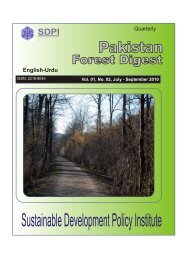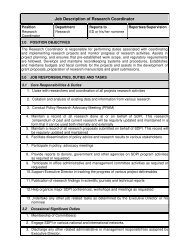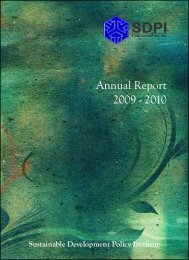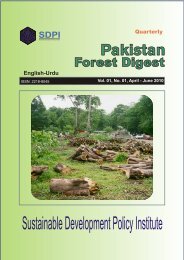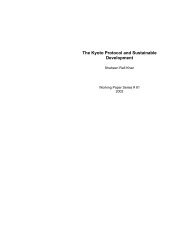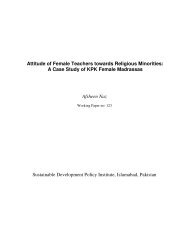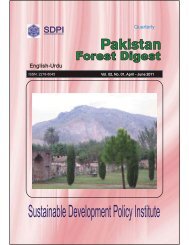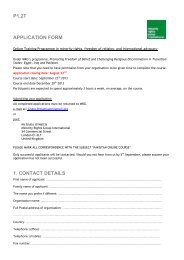Corporate Social Responsibility - Sustainable Development Policy ...
Corporate Social Responsibility - Sustainable Development Policy ...
Corporate Social Responsibility - Sustainable Development Policy ...
- No tags were found...
Create successful ePaper yourself
Turn your PDF publications into a flip-book with our unique Google optimized e-Paper software.
II. Water<strong>Corporate</strong> <strong>Social</strong> <strong>Responsibility</strong>Water is a scarce resource used for several different tasks; it is a serious concernfor manufacturers all over the world. Sugar plantations and mills also bringabout environmental concerns mainly associated with excessive use of water,water pollution and disposal of the resulting waste. Calculations show that toproduce one ton of cane 3-10 cubic meters of water is required.The cultivation of sugarcane and sugar beet is a water intensive process.Processing beets consumes a large amount of water as they need to wash off thesoil from the beets at harvest. Furthermore, agrochemicals and other sedimentsused in the cultivation process pollute the waterways and aquatic habitats of thearea in the series. This brings about a significant environmental impact the formof polluted effluents.Due to weak environmental laws in some countries sugar mills discharge hugeamounts of waste substances straight into the nearby streams during the annualcleaning process. These effluents include heavy metals, oil, grease and cleaningagents. This debris is rich in organic matter; the decomposition of this matterreduces the oxygen levels in the water damaging the natural biochemical processesand the inhabitants of these freshwater systems.As mentioned sugarcane cultivation has excessively water consumption it usesmore water per unit area than any other crop grown in the Indus Basin. Manydams, barrages and irrigation systems have come into being over the past 60years in Pakistan leading to a 90 percent decline in the amount of freshwaterreaching the Indus Delta. The Indus Delta supports the world’s largest area ofarid land mangroves, which rely on freshwater. In 1997 there existed 260,000hectares of mangrove forest now sadly only a 65 percent remains and is dominatedby just one salt-tolerant species.The mangroves of the Indus Delta provide a nursery for young fish and shrimp,which in turn is an important source of income for many. Shrimp are a key exportcommodity for Pakistan, bringing in 68 percent of the US$100 million of the fishexports. Around 4 million people have been pushed into the slums of Karachi cityhunting for appropriate jobs as the drought, excessive irrigation and floods havetaken over their businesses of fishing or river boats.Sugarcane requires about 1500-2000mm/ha/year. Also water is used in the millsto wash off the significant mass of soil covering the plants. Seventy to even ninetyy 48


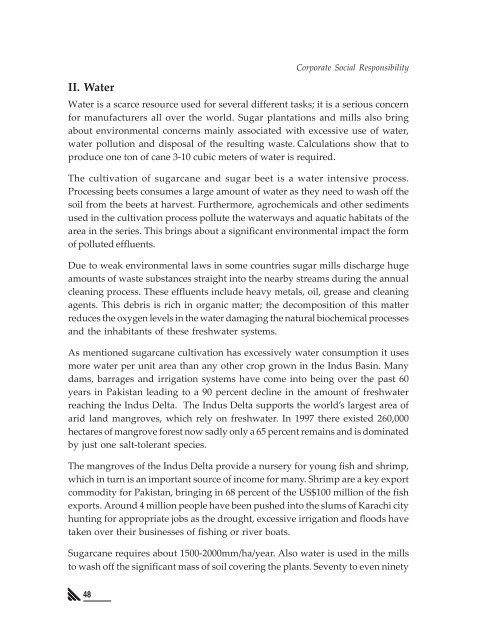
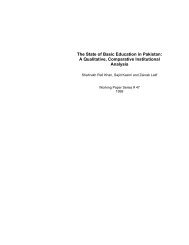
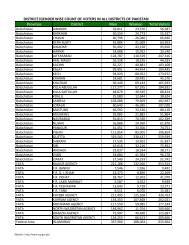
![(October - December, 2010) [13th SDC Special Bulletin]](https://img.yumpu.com/50118608/1/184x260/october-december-2010-13th-sdc-special-bulletin.jpg?quality=85)
